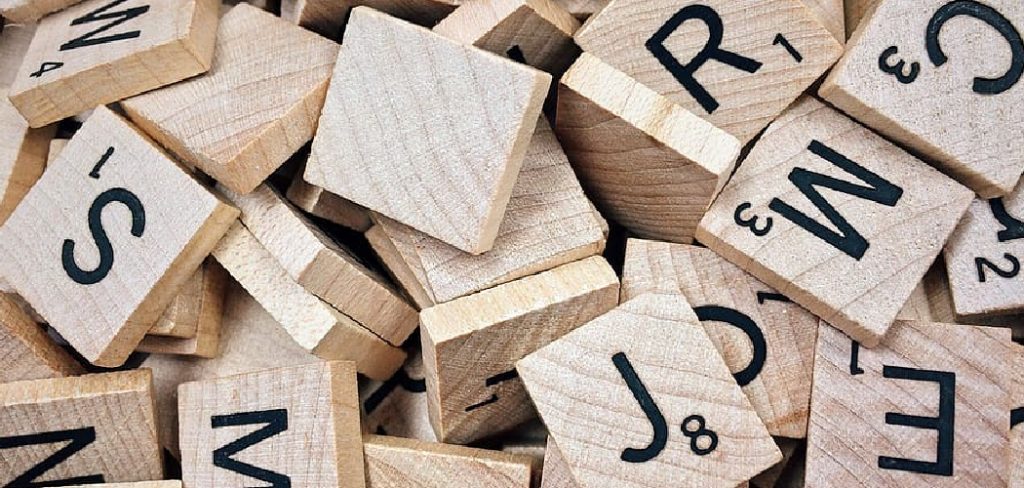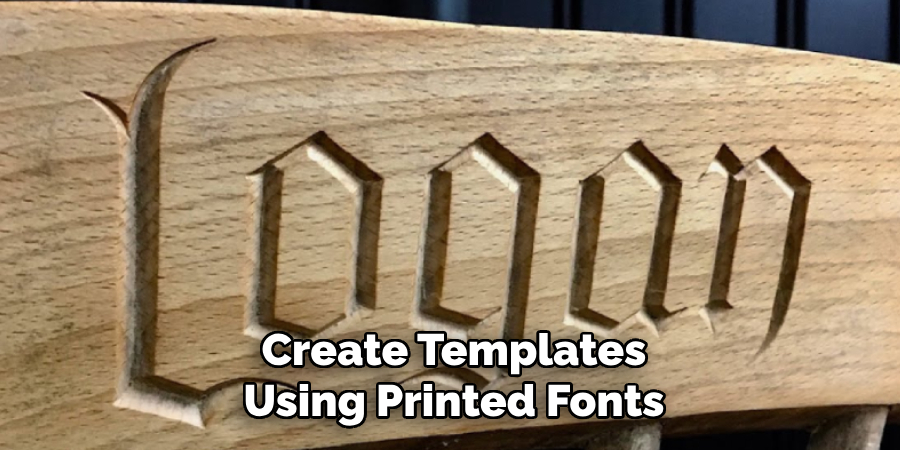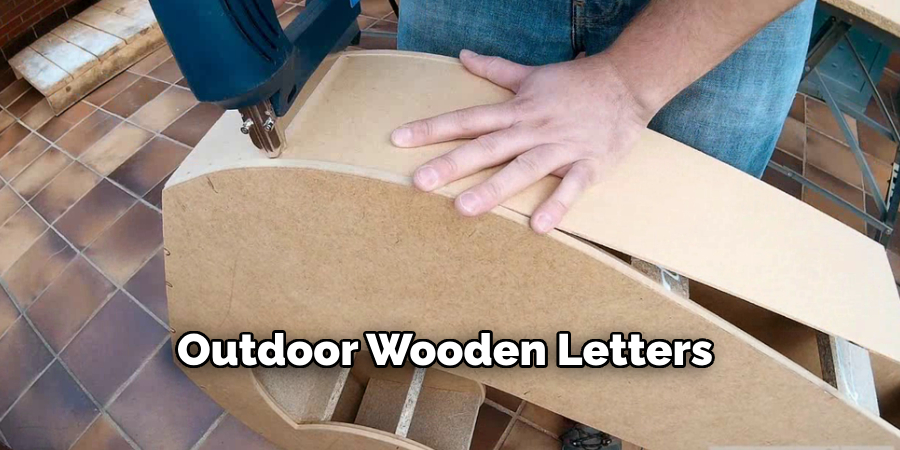Creating wooden letters is a fun and rewarding craft project that allows you to add a rustic, personalized touch to your home or gifts. Whether you’re making them for decorative purposes, signs, or as part of a unique project, wooden letters are both versatile and durable. This guide will walk you through how to make wooden letters with ease.

Benefits of Making Your Own Wooden Letters
Crafting your own wooden letters comes with numerous benefits. Firstly, it allows for complete customization. You can select the size, font, and style that perfectly match your personal taste or project requirements. Secondly, making your own wooden letters is often more cost-effective than buying pre-made ones, as you can source materials affordably and create multiple pieces.
Additionally, the process of crafting wooden letters can be a therapeutic and enjoyable activity, offering a sense of accomplishment and a creative outlet. Finally, handmade wooden letters make thoughtful, personalized gifts that carry a unique, sentimental value.
Materials and Tools Needed
To create your own wooden letters, you will need a few essential materials and tools. Here’s a list to help you get started:
Materials:
- Wood: Choose a type of wood that suits your project, such as plywood, MDF, or solid wood.
- Paper or Cardboard Templates: Pre-drawn or printed letter templates to trace onto the wood.
- Sandpaper (various grits): For smoothing the wood edges and surfaces.
- Paint, Stain, or Sealant (optional): To finish and protect your wooden letters.
Tools:
- Jigsaw or Scroll Saw: Essential for cutting out detailed letter shapes from the wood.
- Clamps: To hold the wood securely in place while cutting.
- Pencil or Marker: For tracing the templates onto the wood.
- Measuring Tape or Ruler: To ensure accurate placement and sizing.
- Paintbrushes or Sponges (optional): For applying paint or sealant to the finished letters.
Having these tools and materials ready will set you up for a smooth crafting process. You can modify the list depending on the complexity or design of your project.
Choosing a Design and Lettering Style
Selecting the right design and lettering style is an essential step in creating your wooden letters. Start by considering the purpose of your project. For a modern and minimalist look, opt for clean, sans-serif fonts with straight edges and simple curves. If you’re aiming for a more traditional or whimsical aesthetic, script or decorative fonts with intricate details can add a unique touch.

Think about the size and thickness of the letters as well. Larger letters can serve as bold statement pieces, while smaller ones work well for subtle accents or layered designs. Additionally, keep in mind how the letters will be used—whether they will stand independently, be hung on a wall, or incorporated into other crafts or displays.
To visualize your design, create templates using printed fonts or freehand sketches on paper or cardboard. Experiment with different styles and layouts until you find the perfect look for your project. By choosing a lettering style that complements the overall theme, you’ll ensure your wooden letters align perfectly with your vision.
10 Creative Ways on How to Make Wooden Letters
1. Hand-Carving with a Jigsaw
Using a jigsaw is a fantastic way to create precise wooden letters at home. Simply trace a stencil or draw your desired letter onto a piece of wood, and carefully cut along the lines with your jigsaw. Opt for plywood or MDF as they’re easier to cut.
Tip: Use clamps to hold the wood in place while cutting to improve accuracy and prevent slipping. Sand the edges afterward for a smooth finish.
2. Wood Burning for an Engraved Look
If you want wooden letters with a rustic, engraved style, wood burning is an excellent method. Use a wood-burning tool to carve your letter designs into flat wood surfaces.
Tip: Practice on a scrap piece of wood first to master holding the tool at the correct angle and pressure.
3. Pre-Cut Wooden Letter Blanks
For an effortless option, buy pre-cut wooden letter blanks from craft stores. These can be customized using paint, markers, fabric, or other embellishments.
Tip: Use acrylic paint for clean coverage and a protective sealant if you plan to use your letters outdoors.
4. Scroll Saw for Intricate Designs
Scroll saws are ideal for creating intricate, decorative wooden letters. Whether you prefer classic serif fonts or cursive designs, this tool offers precise and detailed cuts.

Tip: Choose harder woods, like maple or oak, for durability, especially if your letters involve thin, delicate parts.
5. Router Letter Templates
If you have access to a router, you can use letter templates to engrave or cut wooden letters. This method allows for highly precise results with minimal effort once set up.
Tip: Secure the template to your wood using double-sided tape to keep it steady while routing.
6. Stencil and Paint Method
A simple yet effective method is to apply letter stencils to a plank of wood and paint over them. Once the paint dries, carefully peel off the stencil to reveal the wooden letters beneath.
Tip: Use painter’s tape to ensure a clean and sharp edge on the letters.
7. Laser Cutting for Detailed Precision
For polished and professional results, consider using a laser cutter. These machines can cut or engrave letters with incredible accuracy, making them perfect for intricate patterns or logos.
Tip: Many public maker spaces or libraries offer access to laser cutters if you don’t own one.
8. Cookie Cutter Imprints
Yes, cookie cutters aren’t just for baking! Press metal letter cookie cutters into soft wood, such as balsa, or use them as a guide to trace and carve the letters.

Tip: Perfect for smaller, decorative wooden letters for projects like ornaments or wall art.
9. Hand Paint Block Letters Directly onto Wood
Skip cutting altogether and paint directly onto a wooden surface. Freehand your letters or use a pencil to sketch them first for guidance.
Tip: Use a fine-tip detail brush for sharper edges and control.
10. 3D Wooden Letters Using Layering
For a more dimensional look, cut several layers of the same letter shape and stack them together. Glue the layers on top of one another to create a thick, 3D effect.
Tip: Play with different wood types or paint each layer in contrasting colors for added depth and visual impact.
Maintenance and Upkeep
Proper maintenance ensures that your wooden letters retain their appearance and durability over time. Whether your wooden letters are used indoors or outdoors, a few simple steps can prolong their life and keep them looking fresh.
Indoor Wooden Letters
For indoor wooden letters, regular dusting is often sufficient to maintain their condition. Use a soft, dry microfiber cloth to remove dust and dirt without causing scratches. If the letters are painted or sealed, avoid using harsh chemicals or abrasive cleaners to prevent damaging the finish. For deeper cleaning, gently wipe the letters with a damp cloth and immediately dry them with a soft towel.
Outdoor Wooden Letters
Outdoor wooden letters require extra care, as they are exposed to weather elements like sunlight, rain, and humidity. To protect them, ensure they are coated with a weather-resistant sealant or varnish. Reapply the sealant every 1-2 years, or as needed, to keep the wood sealed and prevent moisture damage. Additionally, inspect the letters periodically for signs of wear, such as cracking, fading, or peeling paint, and address any issues promptly by sanding, repainting, or resealing.

Common Mistakes to Avoid
When crafting wooden letters, avoiding common errors can save time, effort, and materials, ensuring your final results are both functional and visually appealing. Here are some frequent mistakes and tips to prevent them:
1. Choosing the Wrong Wood Type
Selecting inappropriate wood for your project can lead to frustration or fragile results. For instance, softwoods like pine are easy to cut but may not withstand wear and tear, while hardwoods like oak provide durability but can be harder to work with.
Avoidance Tip: Consider your project’s purpose and balance durability with ease of handling when selecting wood.
2. Skipping the Sanding Process
Neglecting to sand your wooden letters can leave rough edges or splinters, lowering the overall finish.
Avoidance Tip: Always sand your letters thoroughly after cutting, starting with a coarser grit and finishing with a finer grit for smooth edges.
3. Ignoring Safety Precautions
Working with tools like jigsaws, scroll saws, or wood-burning kits without proper safety measures can lead to accidents.
Avoidance Tip: Wear safety goggles, gloves, and a dust mask when cutting, burning, or sanding wood. Always follow the manufacturer’s guidelines for your tools.
4. Using Too Much Glue for Layered Letters
When creating 3D wooden letters with layering, excess glue can seep out and create uneven bonding or unsightly marks.
Avoidance Tip: Apply a thin, even layer of glue and use clamps to hold the pieces together while drying.
Conclusion
Crafting wooden letters can be a rewarding and creative activity, whether you’re decorating your home, personalizing gifts, or working on professional signage. By selecting the right tools, techniques, and materials, you can achieve stunning results that are both durable and visually appealing. Remember to consider the environment where the letters will be used, as well as proper maintenance practices, to extend their longevity. Thanks for reading our blog post on how to make wooden letters! We hope you found it helpful and informative.

